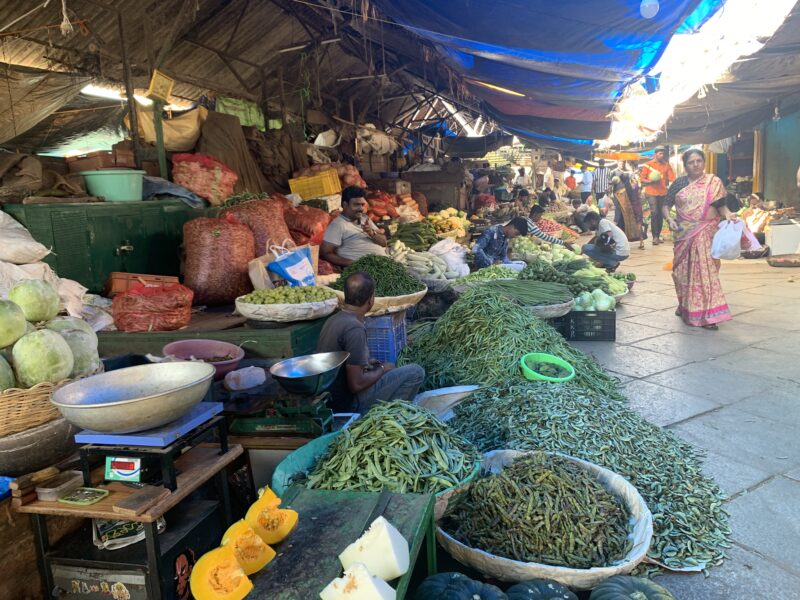Namaste, yogis! Let’s talk about eating. As much as yoga is seen as a means of purifying and strengthening our bodies through physical exercise and postures, there are other tools, practices, and guidelines that can help us bring yoga into the other parts of our life that occur off the yoga mat. Yoga is ultimately a state of pure consciousness, and here at Front Yoga, we approach yoga through the 3rd limb of Patanjali’s 8-limbed plan: asana (or yoga postures) which helps enable us to reach a glowing state of health so that we can pursue our paths of finding joy within ourselves, each other, and the world. To reach bodily health, we not only need physical exercise but we must be mindful of the way we feed our bodies. WHAT do we put in our bodies?
WHAT do we put in our bodies?
WHEN do we eat?
HOW often do we eat?
WHY are we eating?
WHO are we/ what mind state are we in when we have our meal?
HOW much do we eat? WHAT to eat: We should try to mostly eat fresh/freshly cooked food grown locally, in season, and prepared by someone who is feeling peaceful and happy. It’s best not to consume pesticides or chemical fertilizers, and for our food to do as little harm as possible. Many yogis traditionally eat a diet free of meat and eggs but do consume dairy products. Also many yogic texts warn to stay away from too much pungent spice, onions, and garlic as these are thought to increase passions which make it hard to stay equanimous! Water should be room temperature or warmer, so as not to put out our digestive fire (agni). We should drink water between meals, rather than drinking more than a cup or so during the meal. Avoid cooking honey, add it at the end of cooking so it keeps it’s special enzymes. Fresh fruit should be eaten by itself, instead of combining it with other foods. You can eat fruit about 20-30 minutes before a meal, it is very easy to digest when uncombined with other types of foods and leaves the stomach quickly. Schedule an Ayurvedic consultation to learn about your individual constitution and get personalized information on specific foods and herbs/spices that are best for you. We recommend local Ayurvedic consultant Maria Radloff.
WHAT to eat: We should try to mostly eat fresh/freshly cooked food grown locally, in season, and prepared by someone who is feeling peaceful and happy. It’s best not to consume pesticides or chemical fertilizers, and for our food to do as little harm as possible. Many yogis traditionally eat a diet free of meat and eggs but do consume dairy products. Also many yogic texts warn to stay away from too much pungent spice, onions, and garlic as these are thought to increase passions which make it hard to stay equanimous! Water should be room temperature or warmer, so as not to put out our digestive fire (agni). We should drink water between meals, rather than drinking more than a cup or so during the meal. Avoid cooking honey, add it at the end of cooking so it keeps it’s special enzymes. Fresh fruit should be eaten by itself, instead of combining it with other foods. You can eat fruit about 20-30 minutes before a meal, it is very easy to digest when uncombined with other types of foods and leaves the stomach quickly. Schedule an Ayurvedic consultation to learn about your individual constitution and get personalized information on specific foods and herbs/spices that are best for you. We recommend local Ayurvedic consultant Maria Radloff.
WHEN (and how often) do we eat? Most of us should practice yoga on an empty stomach. Some people have hypoglycemia, low blood pressure, or other contraindications however, and they should eat at least a little something first so they don’t get lightheaded or sick.
 According to Ayurveda, we should eat 3 meals a day, 3-4 hours apart with no snacks in between. We can think of the stomach as a pot to cook our food in. Our guest Ayurveda workshop presenter Maria Radloff brought us the example of cooking pasta. Would you put half the amount of dry pasta in boiling water, let it cook for 10 minutes and then add the rest of your pasta? If you did that, you would end up with half hard pasta and half cooked pasta on your plate. So we should let our “pot” finish cooking (digesting) one batch before we begin a new batch. We should let ourselves get hungry before we eat a meal. When the sun is strongest, between 12 and 2 p.m., is when the digestive fire is also strongest. Agni is associated with the sun. This is one of the ways ayurveda seeks to connect our mind and body with the environment. Ayurveda recommends having breakfast before 10 am (or after an early yoga practice), and that lunch be the largest meal of the day, since that is the time the digestive agni is working at its maximum potency. As the sun goes down, so does our agni. Dinner should be lighter than lunch, and should ideally be eaten before 8:00 p.m. Late-night meals interfere with sleep, and after 10:00 p.m. the body is working to burn off toxins and continue to digest food from the day. If you eat after 10:00 p.m., the food may cause toxins to accumulate in the system, and as a result the next day you wake up tired.
According to Ayurveda, we should eat 3 meals a day, 3-4 hours apart with no snacks in between. We can think of the stomach as a pot to cook our food in. Our guest Ayurveda workshop presenter Maria Radloff brought us the example of cooking pasta. Would you put half the amount of dry pasta in boiling water, let it cook for 10 minutes and then add the rest of your pasta? If you did that, you would end up with half hard pasta and half cooked pasta on your plate. So we should let our “pot” finish cooking (digesting) one batch before we begin a new batch. We should let ourselves get hungry before we eat a meal. When the sun is strongest, between 12 and 2 p.m., is when the digestive fire is also strongest. Agni is associated with the sun. This is one of the ways ayurveda seeks to connect our mind and body with the environment. Ayurveda recommends having breakfast before 10 am (or after an early yoga practice), and that lunch be the largest meal of the day, since that is the time the digestive agni is working at its maximum potency. As the sun goes down, so does our agni. Dinner should be lighter than lunch, and should ideally be eaten before 8:00 p.m. Late-night meals interfere with sleep, and after 10:00 p.m. the body is working to burn off toxins and continue to digest food from the day. If you eat after 10:00 p.m., the food may cause toxins to accumulate in the system, and as a result the next day you wake up tired.
WHY do we eat? Hunger can be triggered by so many things. Seeing or smelling food, stress, habit, or emotions are some of the triggers that can cause hunger even when we may not need food. Sticking to a consistent meal schedule every day can help stave off wanting to eat when we do not need to.
WHO are you when you eat? What is your mindset? Are you grateful for your meal? Are you paying attention to your food and the act of eating it? Can you be completely present with the act of eating? It’s so easy and tempting to be involved in someone else’s story rather than living and being present in our own. Take the time to look at your food, to smell it, and to taste it. We should chew our food thoroughly to activate the enzymatic process or breaking our food down into useable nutrition before the food even reaches our belly. Once a day or so try a silent meal, perhaps outside in nature free from distractions such as tv, social media, or even reading a book or magazine. If eating with someone else, enjoy each other’s company with minimal distractions while both being present with each other and your meal.
HOW much should we eat? According to ancient yogic wisdom, we should fill ⅓ of our stomach with food, ⅓ with water, and leave ⅓ empty. If our cooking pot is filled to the brim, it is very hard to cook without the pot boiling over.
*We have referred to the Yoga Sutras, a text compiled at least 1700 years ago by the sage Patanjali from much older practices, and the Hatha Yoga Pradipika, which was composed in 15th century CE by Swami Swatamarama and is derived from older Sanskrit texts, as well as the science of Ayurveda and teachings from our own yoga teachers as sources of information on nourishing ourselves.